Homemade Vegan & Gluten-free German Soft Pretzels that are truly soft and chewy on the inside while being deliciously crispy on the outside. These are super easy to make and taste just like the real German/Austrian deal. Enjoy them with vegan cream cheese or choose a classic mustard dip, you really can’t go wrong. You won’t be able to stop eating these bad boys.
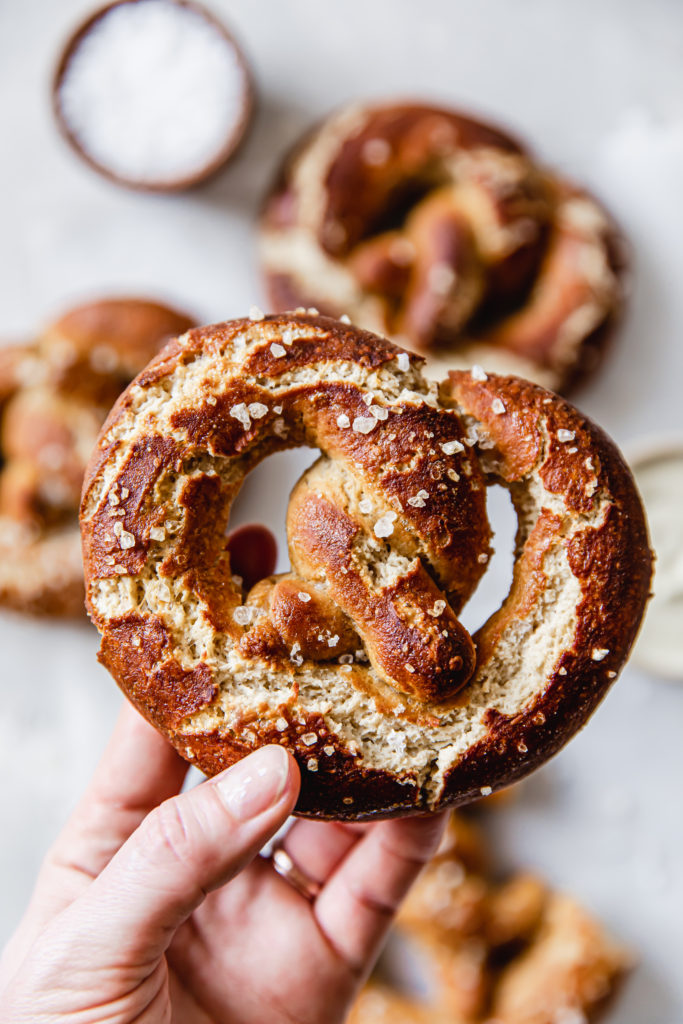
Growing up in Salzburg, near the border of Austria and Germany, for most of my life, I have definitely eaten my fair share of traditional German pretzels. Whether it was at Oktoberfest, St. Rupert’s Day Fair, or any other festival you better believe I would thoroughly enjoy one of these delicious classics.
When I moved to the US, I had the chance to try the American version of a German pretzel. As most Americans probably know, you can get these soft pretzels basically at any mall in a bunch of different flavors (cheese dips and cinnamon sugar seem to be the most popular). Having tried both, I have to say, I do prefer the European style due to the unique crispy crust of the pretzel.
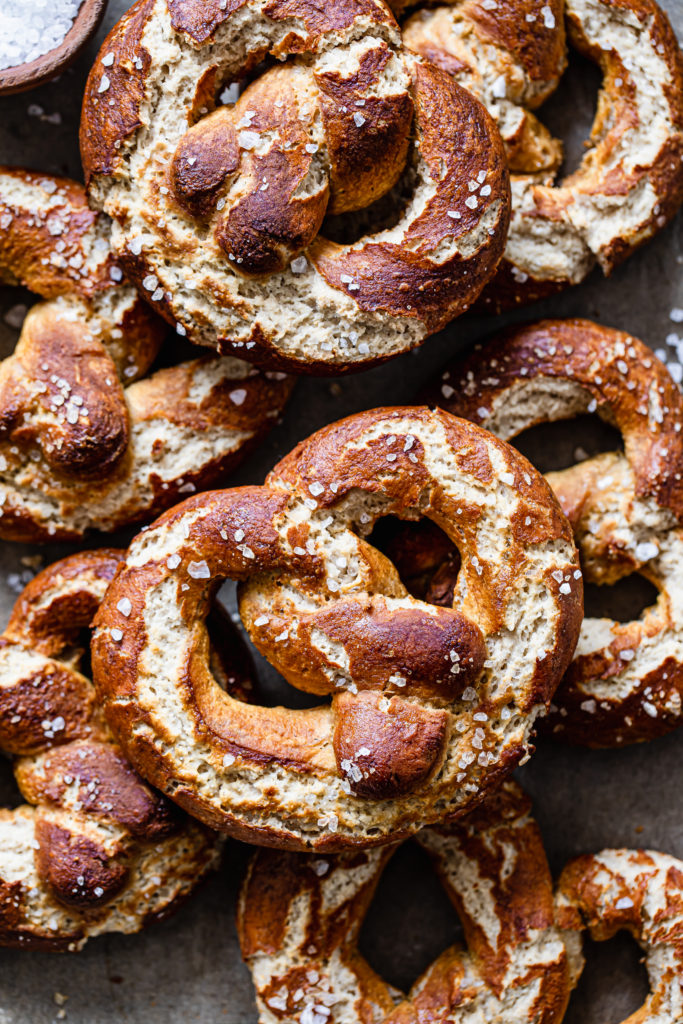
Switching to gluten-free and dairy-free meant saying goodbye to this beloved childhood comfort food for a few years, until now, when I decided to work out my own healthy recipe. After a few failed attempts, I was finally able to create the most perfect vegan and gluten-free German pretzel. They look and taste just like the real deal!
If I say the most perfect, I really mean the MOST PERFECT. The center is incredibly soft and the brown salty artisan crust is an absolute dream. From the looks of it you wouldn’t believe they are vegan and gluten-free, but please, try them for yourself and see how good they turn out 😛

What makes the most perfect vegan & gluten-free German soft pretzels?
For this gluten-free pretzel recipe I used a combination of tapioca starch, corn starch, gluten-free oat flour and gluten-free brown rice flour. Unlike any other gluten-free flours oat and brown rice come the closest to a regular all-purpose flour in terms of flavor and texture.
By omitting the glutenous flour I needed to add an alternative. Tapioca starch is one of the most versatile gluten-free flours and is essential in gluten-free baking. A blend of tapioca and corn starch helps add a thick and chewy texture to these pretzels that you’d normally not get with just using other types of gluten-free flours.
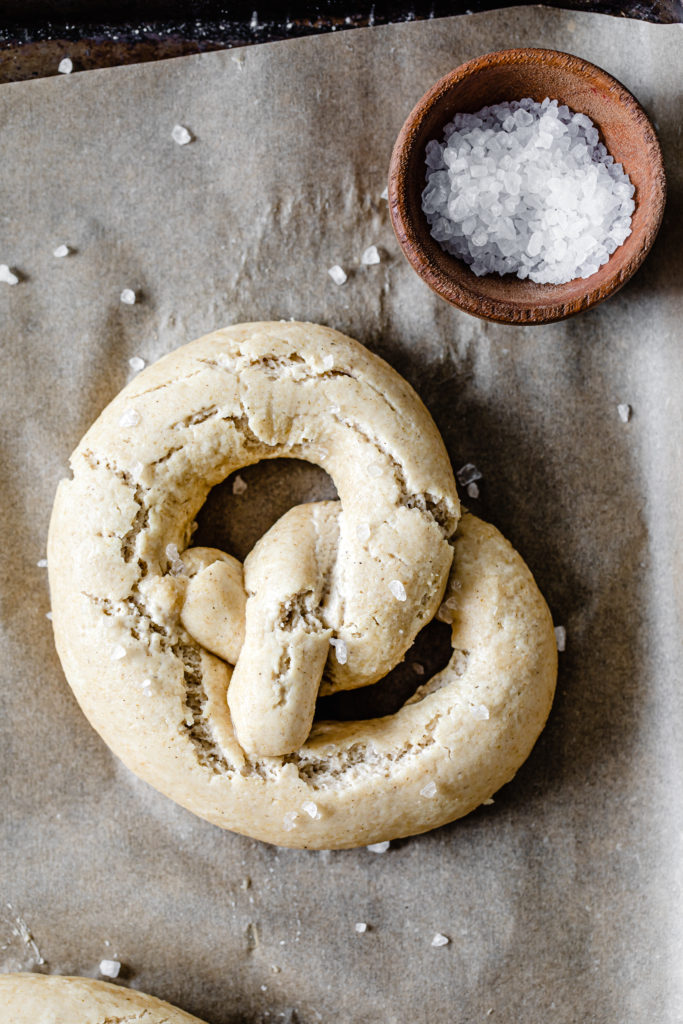
As a binder I used xanthan gum. It is a gluten-free and plant-based thickening and stabilizing agent that adds volume and elasticity to the dough. If you don’t like the idea of using xanthan gum, and want a whole ingredient, I came up with a gum-free version as well!
As a replacement to the gum I used psyllium husk powder which worked very well. Psyllium is a soluble fiber derived from the seeds of Plantago ovata, an herb mainly grown in India. If you decide to make this recipe gum-free, make sure to add a bit more milk, especially if it seems like your dough is too dry: details in recipe below.
The pretzels will taste and look almost the same with a few exceptions. Using psyllium husk powder, the dough will be a bit more pliable (you won’t have to be as careful as when using xanthan gum) and the pretzels come out of the oven a little softer and chewier, just like an American soft pretzel.
Whatever ingredient you choose, you’ll end up with some perfect healthy pretzels. Your loved ones will be thrilled to try these.
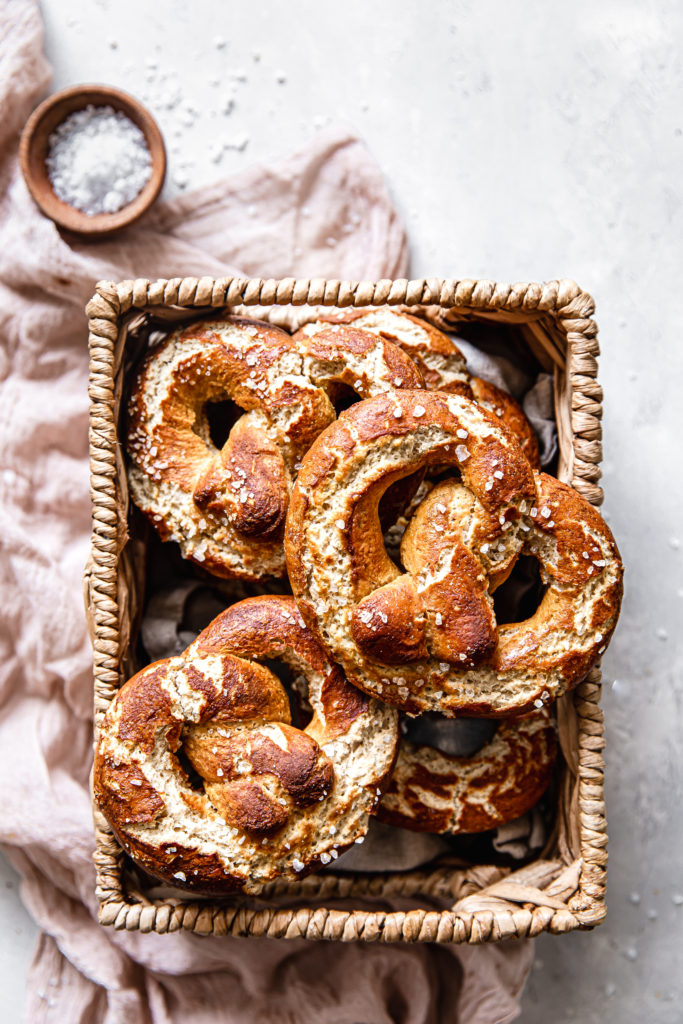
Why do pretzels need a baking soda bath?
The baking soda bath essentially gelatinizes the outside of the pretzel, giving pretzels their signature chewy crust, their unique and distinct pretzel flavor, and the dark brown color you’d normally not get without it.
Add 10 cups of water and 1/3 cup of baking soda into a large pot. Bring to a boil and place one pretzel at a time into the boiling water for about 30 seconds. Gently lift out of the water with a spatula and place onto the baking sheet. Once all pretzels have had a bath, let them sit for about 10-15 minutes while the oven is preheating. By doing that, the pretzels will rise a bit more and create these beautiful big cracked patterns you see below.
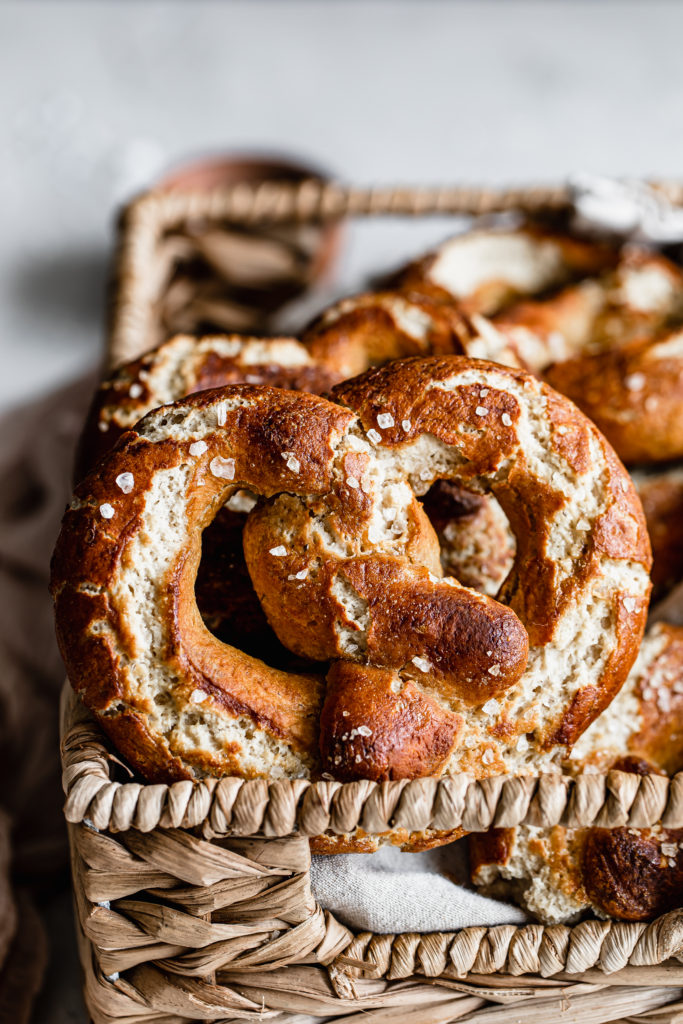
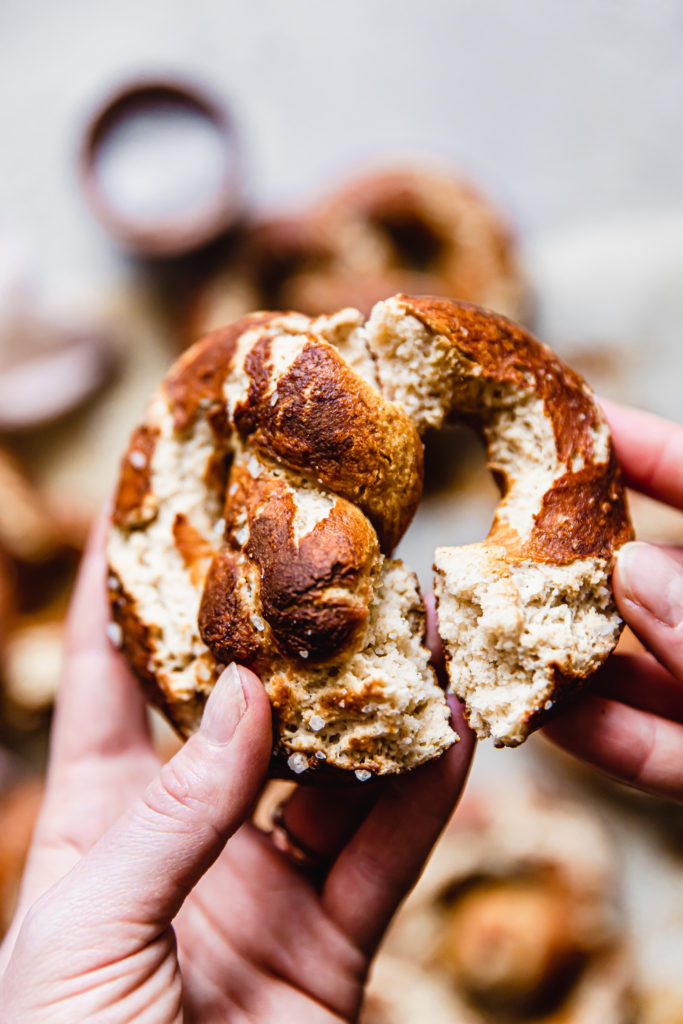
If you happen to make these amazing vegan & gluten-free german pretzels, please let me know. I’d love to see how they turn out. As always, don’t forget to tag @delight.fuel or simply comment below.
This post contains an affiliate link. As an Amazon Associate I earn a small commission from qualifying purchases. I only recommend products that I trust and have used myself.
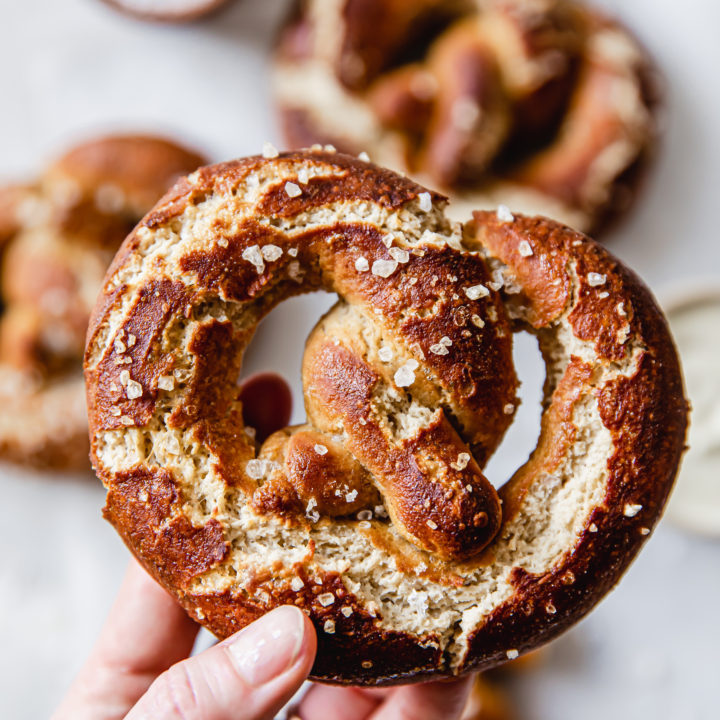
Vegan & Gluten-Free German Soft Pretzels
Homemade vegan & gluten-free German soft pretzels that are truly soft and chewy on the inside while being deliciously crispy on the outside. These are super easy to make and taste just like the real German/Austrian deal. Enjoy them with vegan cream cheese or choose a classic mustard dip, you really can't go wrong.
Ingredients
- 1 1/4 cups tapioca starch
- 1 cup + 2 tbsp cornstarch
- 2 1/4 cups gluten-free oat flour
- 1/2 cup brown rice flour
- 1 1/2 tsp xanthan gum (to make pretzels gum-free use 2 tbsp of psyllium husk powder instead and add 1/4 cup of cashew milk to the recipe)
- 3 tsp active dry yeast
- 2 1/2 tsp salt
- 1 3/4 cups cashew milk (sub with any plant-based milk)
- 1/3 cup coconut oil (melted and cooled)
- 3 tbsp light agave syrup (sub with maple syrup)
- 1 tbsp coarse sea salt
- 1/3 cup baking soda
- 10 cups water
Instructions
- In a small pot warm cashew milk over low-medium heat. * Transfer into a medium sized bowl. Add agave syrup and yeast and stir until combined. Let sit for about 15 minutes while yeast activates. **
- Combine tapioca starch, oat flour, corn starch, brown rice flour, xhanthan gum and salt in a stand mixer (with dough attachment) or medium sized bowl if not using a stand mixer. Add coconut oil and yeast milk liquid. Mix over medium speed for about 5 minutes until the dough appears sticky but firm. If not using a machine, mix with a wooden spoon in the bowl for a few minutes.
- With a spatula, transfer dough out onto a floured surface*** and knead with tapioca dusted hands for about 2 minutes.
- Shape into a ball and transfer dough into a lightly oiled (avocado oil) large bowl. Cover with dish towel or plastic and set in a warm place for about 60 minutes. Dough will rise to twice the size.
- After 50 minutes bring water and baking soda to a boil and line two baking sheets with parchment paper.
- Transfer dough onto your rolling surface and divide into 8 equal pieces. ***
- Roll out one piece of dough into a 15-18 inch rope and shape into the letter U. Take both ends and cross over each other twice. Fold them down and press lightly onto the bottom of the U shape.**** Carefully transfer pretzel with a large spatula into the boiling baking soda bath for about 30 seconds. Gently lift out of the water and transfer onto the lined baking sheet. Repeat the process with the remaining pieces of dough.
- Let pretzels sit on the baking sheet for about 10 minutes until the oven is preheated to 450 degrees Fahrenheit.*****
- Sprinkle with coarse salt and bake in the oven for about 15-17 minutes until pretzels are golden brown.
- Serve while still warm with vegan cheese dip or mustard.
- Store leftovers in the freezer and defrost in the microwave/oven before serving again.
Notes
*If milk is too hot, let it cool down to room temperature to prevent killing the yeast.
**Liquid should get foamy. If not, try with a new batch of dry yeast.
***use around 1 tbsp of tapioca flour on your surface. If you choose to use psyllium husk powder, you won't need any flour to shape the pretzels.
****be gentle with the dough to avoid breaking while folding.
*****by letting the pretzels sit for another ten minutes they will rise a bit more. Doing that will create these beautiful big cracked patterns in the pretzels.
Recommended Products
As an Amazon Associate and member of other affiliate programs, I earn from qualifying purchases.


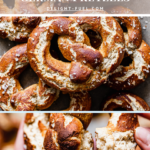
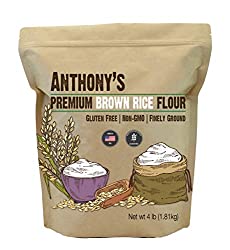
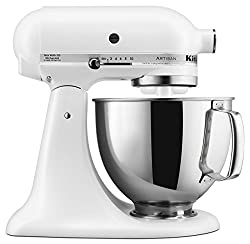
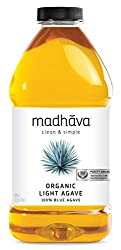
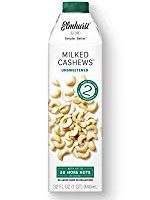

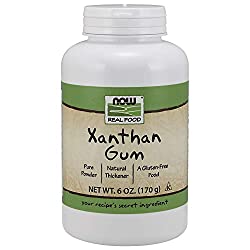
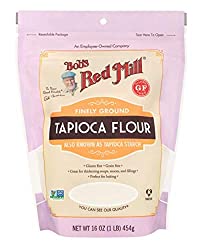
is there a substitute for brown rice flour? thanks!
Hey Meaghan,
yes, you can use gluten-free oat flour instead.
let me know how it turns out!
Best,
Julia
Do you know substitute for corn starch?
Hey Bea,
yes, you can use tapioca flour or arrowroot flour as well!
Best,
Julia